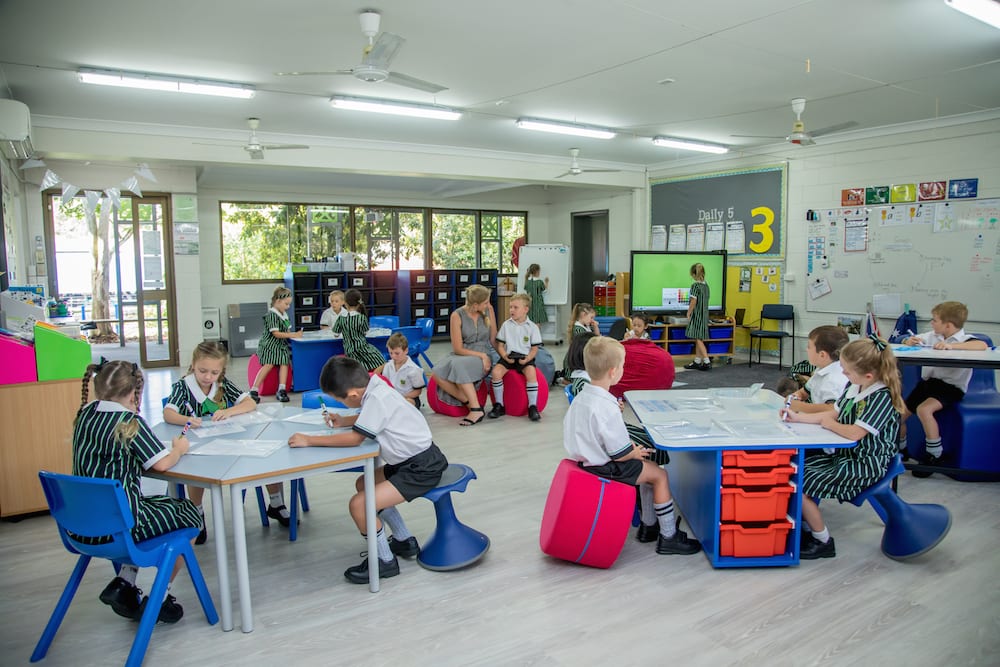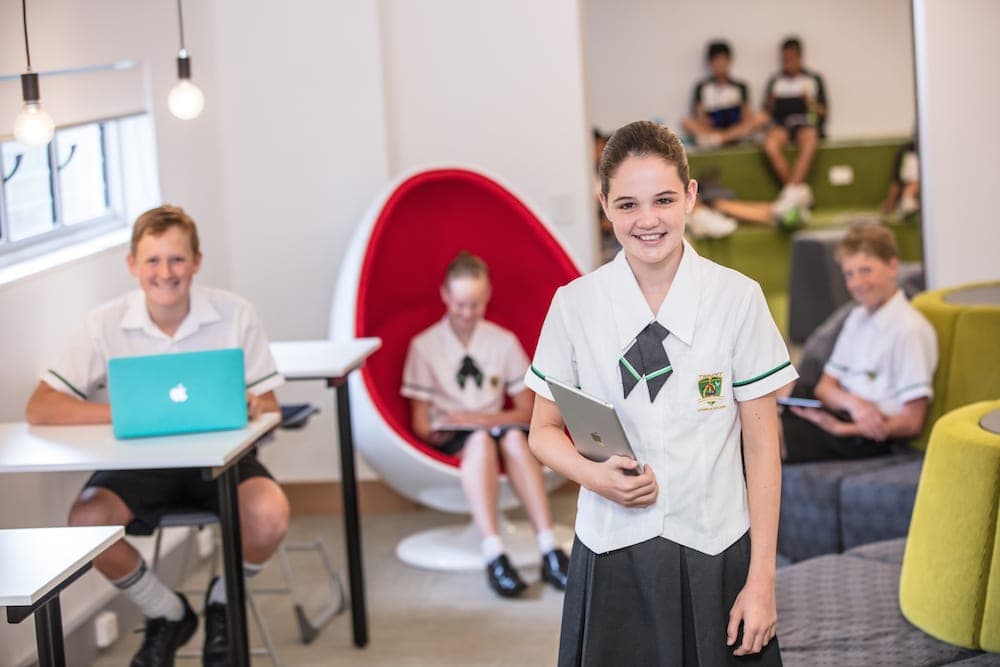Flexible Learning Spaces By Louise Lavery for Families Magazine Gold Coast April/May 2017 issue
Long gone are the ‘chalk and talk’ days that framed old ideas of teaching and learning. Today’s schools are focused on designing and providing the best possible environments for exciting and innovative education to take place in.
When parents think ‘classroom’ our minds often hark back to the old days of individual desks sitting in rows and columns, facing the front and letting the teacher fill us with all the knowledge that we needed. Modern research and observations of the way students learn, however, teach us that this is no longer considered best practice.
Mrs Tsae Wong, the Principal of Trinity Lutheran College, identifies that this new knowledge and understanding of how children learn has inspired many administrators to “rethink and redesign our learning spaces… to prepare our students for the jobs that have not yet been created along with 21st century work and life”.
Flexible learning spaces are proving a huge success at Trinity Lutheran College
What are flexible learning spaces?
Put very simply, this is a classroom learning environment that has been strategically built and designed in order to promote the curiosity and freedom to engage with content in the way that suits students best. As parents, we understand that each child has their own strengths and limitations – a flexible learning model seeks to allow a ‘way in’ for every learner that they may not have had in a more traditionally designed classroom.
Here you will find the theory of inquiry learning at play as educational theorists intended it. Students can engage in collaborative communication about projects, make use of up-to-date technology, use physical space and levels to explore concepts and employ design principles to their individual and group learning. There may be different ‘zones’ that have displays, small classroom libraries, beanbags, technology stations and real-world materials. You may find that the furniture has dual or multiple uses and can be adjusted to suit different learning experiences – for example, the surface of a table may be solid on one side but a whiteboard underneath for project-mapping.\
Students become more confident as they are free to learn in a way that works for them. Image: Trinity Lutheran College.
How are flexible learning spaces designed?
As well as making considered use of research and educational theory, schools that engage in the use of flexible learning spaces will consult with the school community. Educators, parents and students will be encouraged to provide feedback in order to make sure the classrooms are the appropriate fit for the environment. A ‘one size fits all’ approach to education is no longer relevant – we now know that all kids work differently so the onus is on schools to create spaces where everyone can do their absolute best.
In a flexible learning space, you will find…
- Desks and other furniture that can easily move to accommodate different needs and different activities
- Design that is reflective of the local environment and community
- Areas that promote student and teacher communication and collaboration
- Classrooms that encourage students to be active participants in their learning rather than passive vessels
- Design that promotes a sense of inquiry, wonder and excitement instead of drudgery
- Classrooms where the teacher can deliver flexible lesson content – lecture style, group style, presentation style or activity style
- Design that challenges students to think and do more
- A space that places high value on the important of respectful relationships and partnership rather than the need for discipline as a means of control
The choices of colours, materials and furniture will be a careful process. A great deal of effort is placed on choosing an environment that is engaging and supportive of student need – even though it may not seem like a big deal to you, even the colour of the carpet can have a significant impact on learning!
At many schools that have already implemented flexible learning spaces, the results are speaking for themselves. At Trinity Lutheran College, “the response from staff, parents and students has been overwhelmingly positive”.
Ask your school for a tour to see how they are incorporating this new way of learning. Image: trinity Lutheran College.
What if my child does not like the flexible learning space?
Just as we all know from our own workplaces, some people work better in heavily structured environments than others. The wonderful thing about these new designs is that the spaces can be adapted to best suit the needs of the learners – your child’s teacher will know how your child works best and ensure that they have the same opportunities as everyone else.
Talk to your school about flexible learning spaces
School open days aren’t just for new families – if you’re keen to see how your child’s classrooms work in action make sure you get along to a tour. Have a look at the creative, individual ways that today’s students are able to make the most of these dynamic teaching and learning environments. Hard-backed chairs and individual wooden desks are definitely yesterday’s news!




